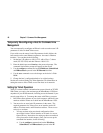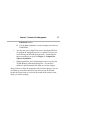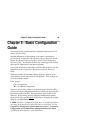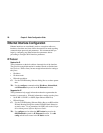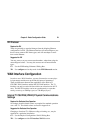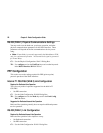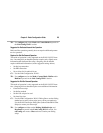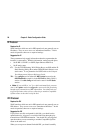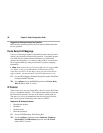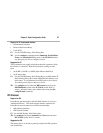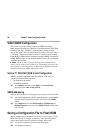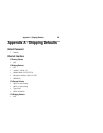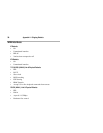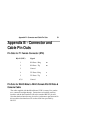
24 Chapter 6 - Basic Configuration Guide
IP Protocol
Required for IP
WAN interfaces which are set for PPP operation do not generally use an
IP address. They are set to act as an “unnumbered interface.” In this
mode of operation, there are no required settings.
Suggested for IP
These parameters help supply information about the segment that the
interface is connected to. With this information, routing can take place.
• Set IP RIP 1, IP RIP 2, or OSPF (Open Shortest Path First)
• Set IP static routes
CV: Use the TCP/IP Routing: WAN Dialog Box to set RIP, and the IP
Static Routing Dialog Box (under Global/IP Static Routes) to set
static routes. To set parameters for OSPF, refer to the Compati-
View Management Software Reference Guide.
TB: Use configure and set either the RIPVersion keyword or the
OSPFEnabled keyword for in the IP WAN 0 (and/or WAN 1)
section. Use edit config and add static routes in the IP Static
section.
Note: If you set RIP to “on” for a dial-on-demand link, you must
also set the update method to triggered to prevent the link from being
brought up by transmission of RIP information. You should only use
triggered operation when you are connecting to another Compatible
Systems router at the other end of the link.
IPX Protocol
Required for IPX
WAN interfaces which are set for PPP operation do not generally use an
IPX address. They are set to act as an “unnumbered interface.” In this
mode of operation, there are no required settings.
Suggested for IPX
If you plan to use dial-on-demand for this link, you should set the
update method to “triggered” to avoid the link being brought up by
transmission of IPX RIP information. You should only use triggered
operation when you are connecting to another Compatible Systems
router at the other end.
When you set up an on-demand link with IPX, you should carefully



